Time Is Time Was
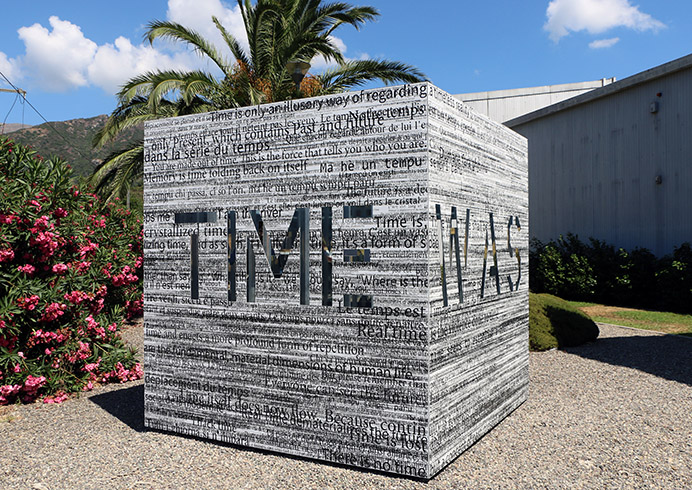
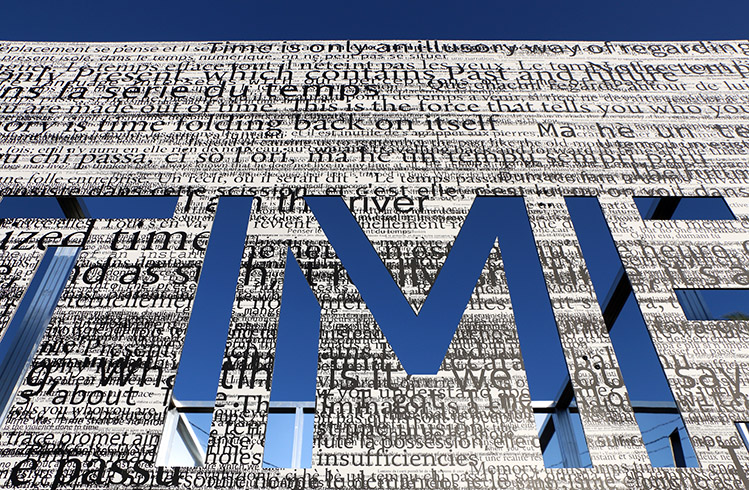
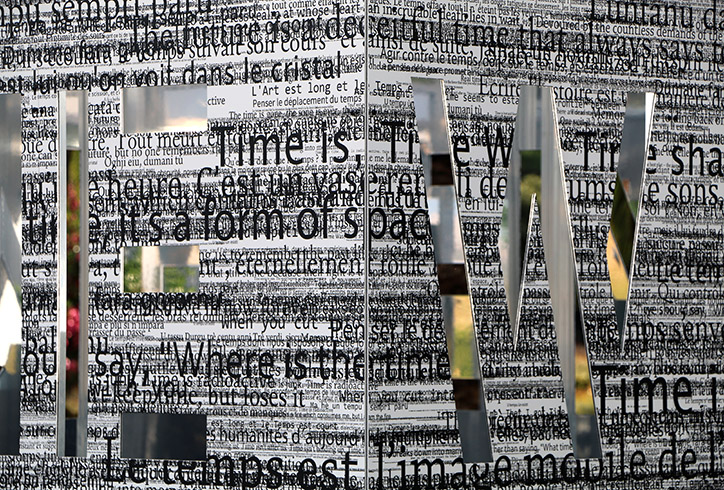
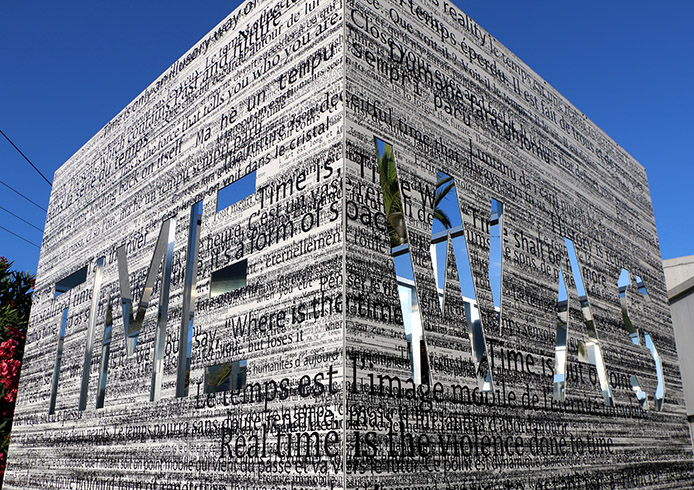

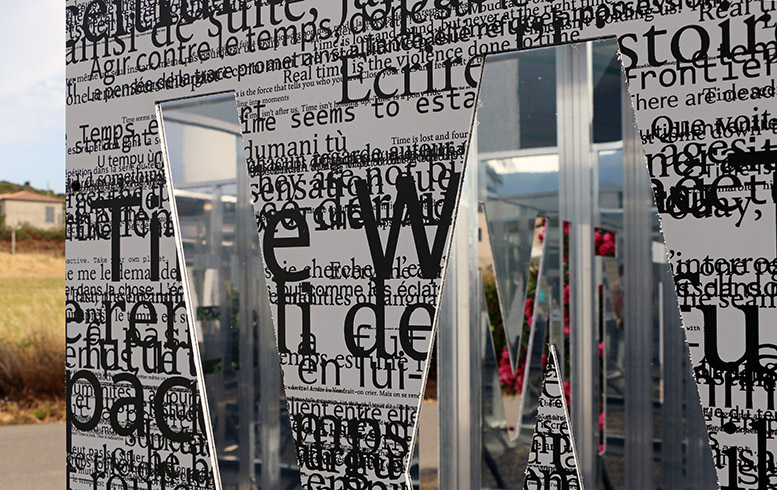
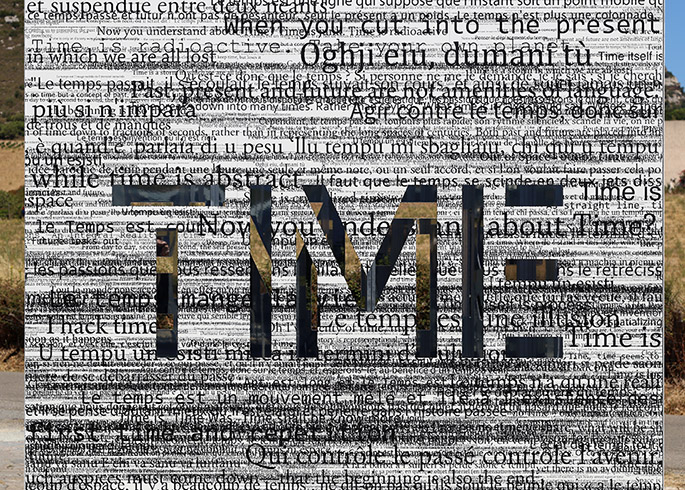
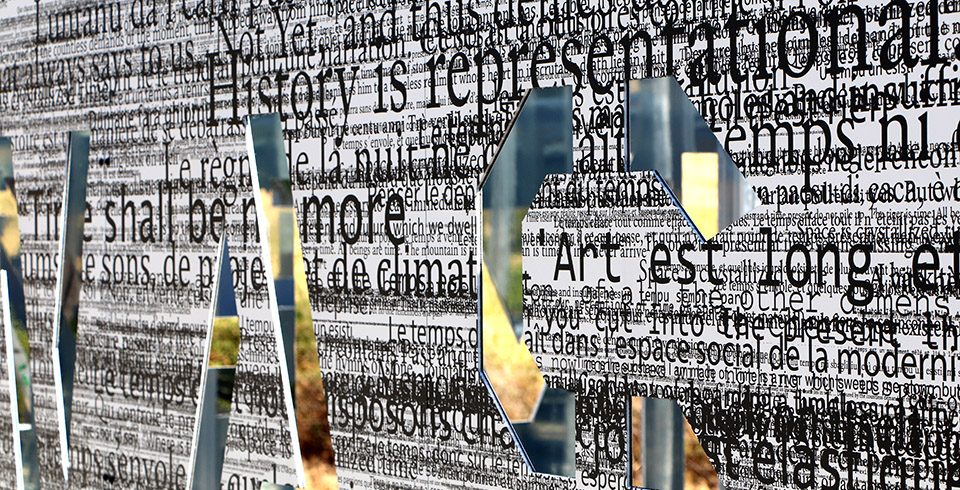
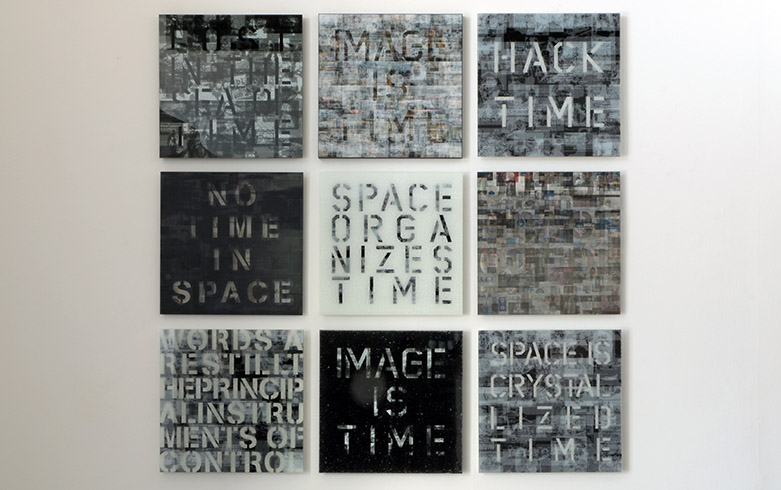
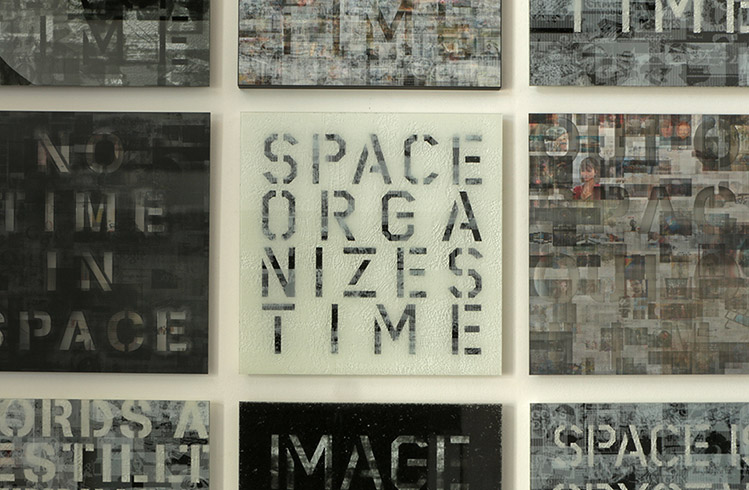
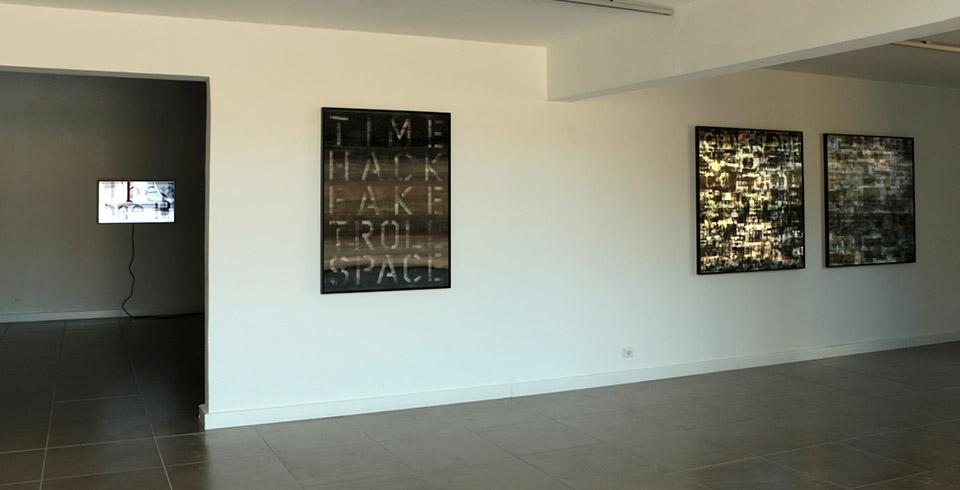
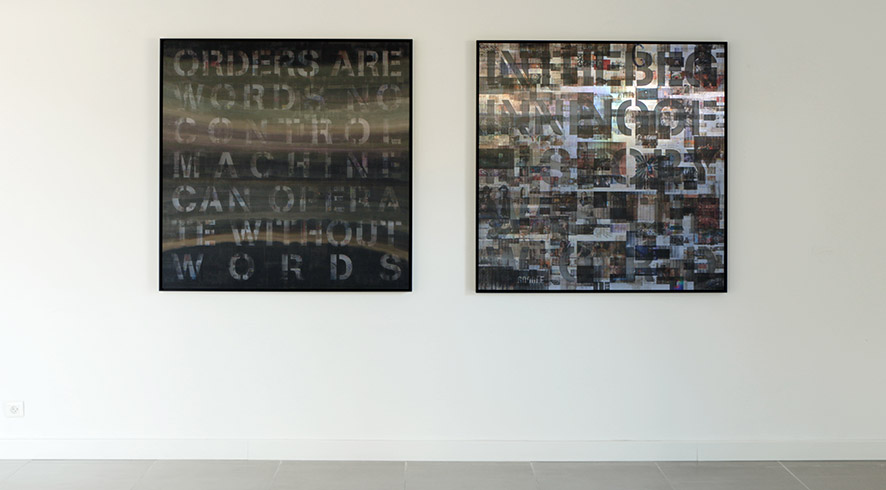
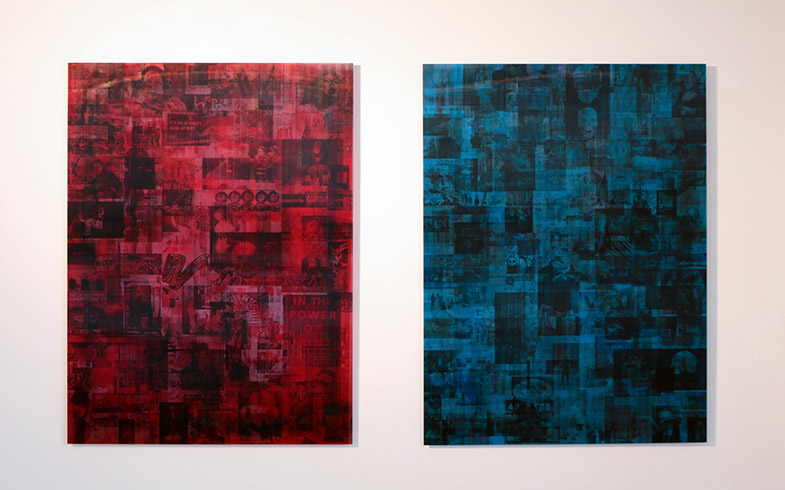
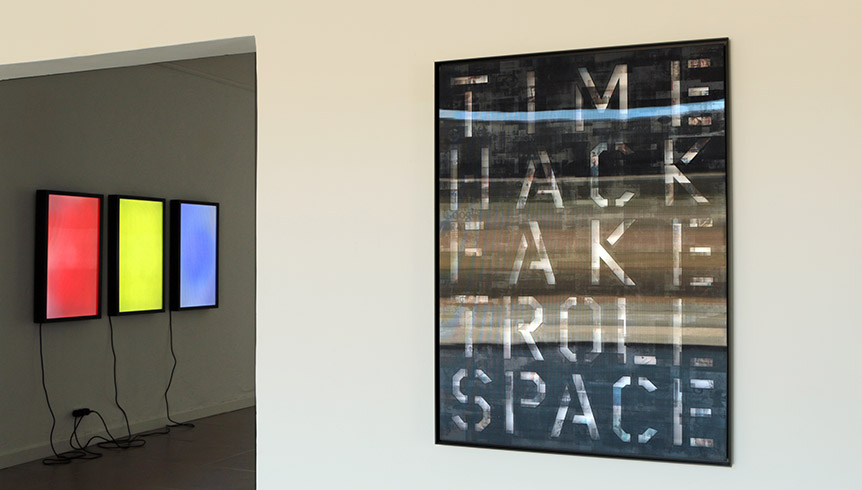
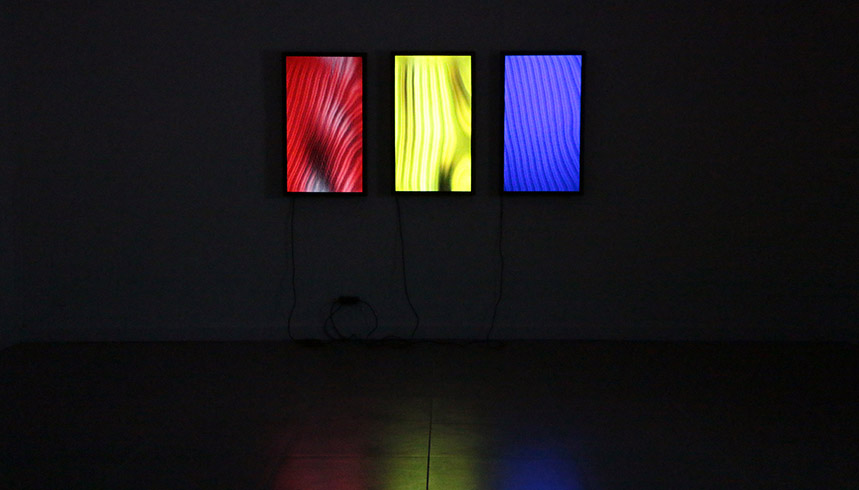
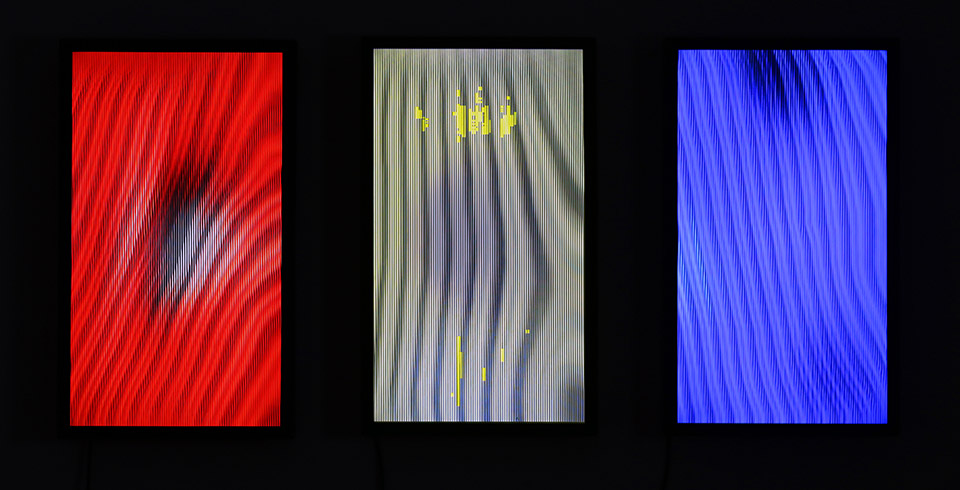
Time Is Time Was invites us to reflect on our relationship with time through the contemporary digital and technological worlds in which we are immersed. The exhibition draws its title from Andy Warhol’s The Philosophy of Andy Warhol, where he quotes James Joyce when trying to comprehend the concept of time. ‘I try to think of what time is and all I can think is . . . Time is time was’.
Viewers are first confronted by Dombis’ Time Cube, a large mirrored structure covered with quotes about time from noted authors in English, French and Corsican. A random proliferation algorithm generated the text, which is printed in varying sizes and positions. The result is a surprising and captivating sculpture that allows the viewer to plunge into the wisdom of famed writers, and reconsider their own concept of time.
Inside the gallery is the Color Screen of Death, a digital monochrome triptych that draws on traditional notions of painting and digital construction. It takes its title from the Blue Screen of Death – the common name for the screen that appears when a fatal error occurs within Windows programming systems. Pascal Dombis deliberately allows the technological errors that are an occupational hazard of working with computers. Thus the red, yellow and blue screens sporadically blink, or display pixellation, a manifestation of movements not intentionally programmed.The piece also refer to Rodchencko iconic constructivist artwork: Pure Red Color, Pure Yellow Color, Pure Blue Color. Exhibited in 1921, this triptych represented to Rodchencko the end of painting : “I reduced painting to its logical conclusion and exhibited three canvases: red, blue and yellow. I affirmed: it’s all over.”
Time Is Time Was exhibition runs until 1st of October 2017.